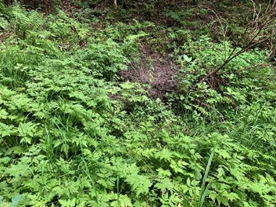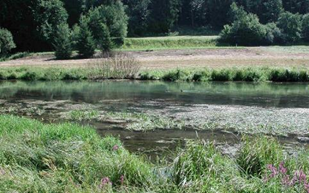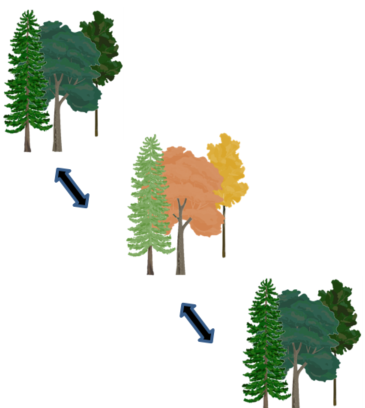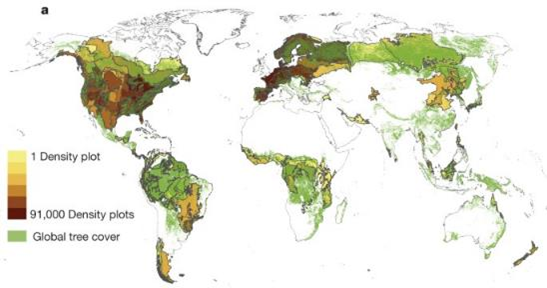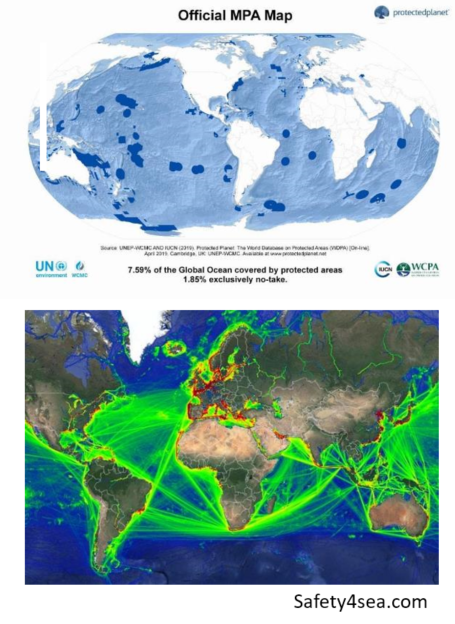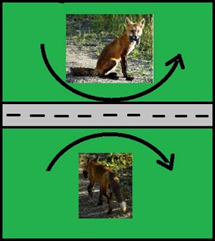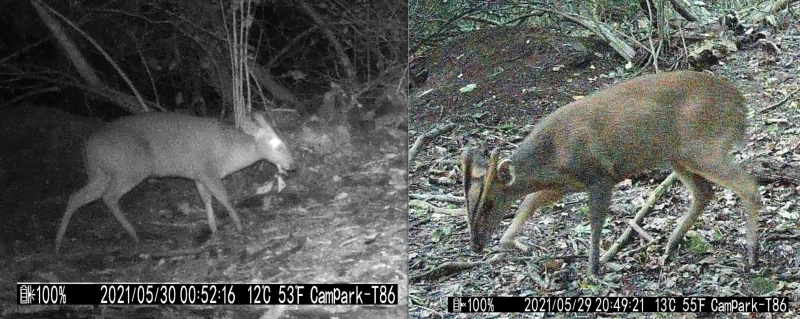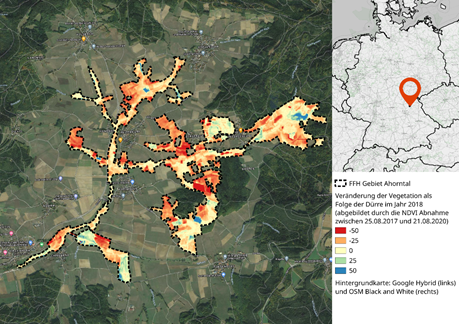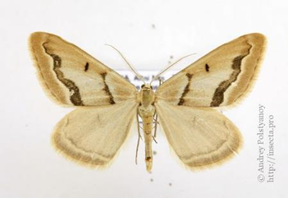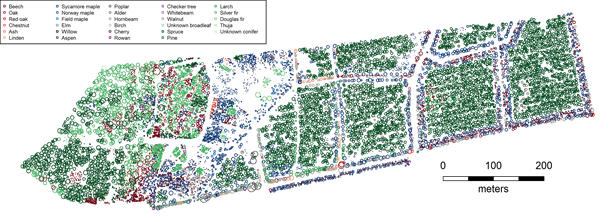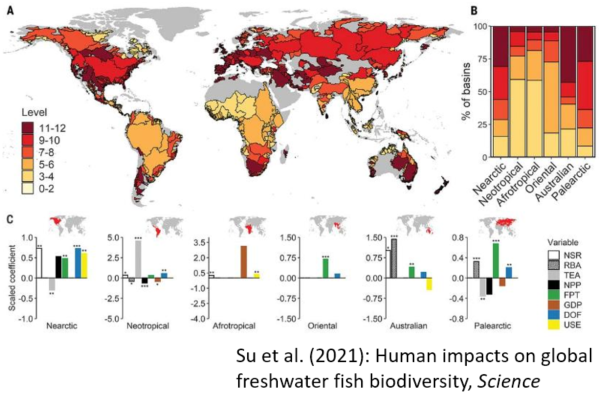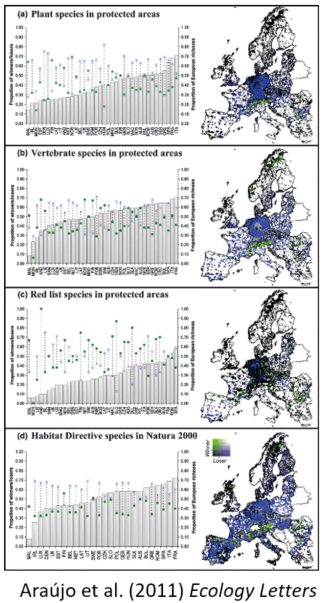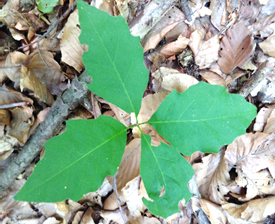Angebotene Master-Arbeiten
| Auswirkungen der Dürre auf Quellfluren Ziele: In den Dürreperioden der Jahre 2018 und 2019 fielen zahlreiche sonst kontinuierlich schüttende Waldquellen trocken. Durch einen Vergleich vorher / nachher soll der Einfluss dieser außergewöhnlichen Ereignisse auf die Artenzusammensetzung und Diversität von Waldquellfluren untersucht werden. Studiengänge: B.Sc. / M.Sc. Geoökologie, M.Sc. Biodiversität & Ökologie Sprache: Deutsch/English Beginn: April/Mai 2021 Ort: Frankenwald und Fichtelgebirge Vorkenntnisse: Artkenntnisse, Pflanzenbestimmung, R für M.Sc. Methodik: Feldarbeit, Zeitreihen, Botanik Ansprechpartner: Carl Beierkuhnlein, Timothy Smith |
| Biodiversitätsmuster in der Kulturlandschaft Ziele: Es ist viel die Rede von Biodiversitätsverlust und der Notwendigkeit Biodiversität zu erfassen, doch gibt es zu wenig praktische Arbeiten hierzu. In dieser Arbeit (evtl. mehrere) wird Pflanzen-Artenvielfalt kartiert und auf Landschaftsstrukturen bezogen. Hierzu ist die Identität einzelner Arten nicht zwingend erforderlich. Studiengänge: B.Sc. / M.Sc. Geoökologie, M.Sc. Biodiversität & Ökologie. Sprache: Deutsch/English Beginn: April/Mai 2021 Ort: Nähe Bayreuth (Frankenalb/Fichtelgebirge) Vorkenntnisse: Artkenntnisse, Pflanzenbestimmung, R für M.Sc. Methodik: Feldarbeit, Remote Sensing, Botanik Ansprechpartner: Carl Beierkuhnlein, Frank Weiser |
| Forest Response to Drought Stress Aims: Drought episodes are predicted to increase their intensity and frequency globally, which will have a particular impact on forest vitality, productivity, and species distribution. This study aims to assess the impact of tree species interaction on forest vulnerability to drought. Study programs: M.Sc. GCE, B.Sc./ M.Sc. Geoökologie, M.Sc. Biodiversity & Ökologie, M.Sc. Environmental Geography Language: English Start: anytime Location: N Bavaria/ Germany Skills needed: Basic knowledge of R Methods: Modelling, Remote Sensing Ansprechpartner: Carl Beierkuhnlein, Mirela Beloiu Schwenke |
| Global analysis of tree structure in protected areas Aims: Forest structure is a key driver of ecosystem diversity. Here we aim to identify forest structure patterns between IUCN protected categories. Study programs: M.Sc. GCE, B.Sc./ M.Sc. Geoökologie, M.Sc. Biodiversity & Ökologie, M.Sc. Environmental Geography Language: English Start: anytime Location: Globally Skills needed: Basic knowledge of R Methods: Modelling, Data Mining Ansprechpartner: Carl Beierkuhnlein, Mirela Beloiu Schwenke |
| Human Impacts on Marine Protected Areas Aims: Geographical analysis of anthropogenic factors (e.g. shipping traffic, fishing quota, water pollution) affecting marine protected areas using open data. Study programs: B.Sc. / M.Sc. Geoökologie, B.Sc. Geographie, M.Sc. Biodiversität & Ökologie, M.Sc. Global Change Ecology, M.Sc. Environmental Geography Language: Deutsch/English Start: anytime Location: Global Skills needed: Basic knowledge in R and GIS Methods: Modelling, Data Mining Ansprechpartner: Carl Beierkuhnlein, Samuel Hoffmann |
| Landscape fragmentation inside protected areas Aims: Habitat loss and fragmentation are causing an unprecedented decline in global biodiversity. Protected areas (PAs) are meant to counteract loss and fragmentation. Yet, even inside PAs ecosystems are fragmented. Our goal is to understand the patterns in which fragmentation occur inside and around PAs. Study programs: B.Sc. / M.Sc. Geoökologie, M.Sc. Biodiversität & Ökologie, M.Sc. GCE Language: Deutsch/English Start: anytime Location: Germany / Europe Skills needed: GIS, R Methods: Modelling, Data Mining Ansprechpartner: Carl Beierkuhnlein, Alexandra Lawrence |
| Muntjacs - invading Europe?
Aims: Small dear (Muntiacus reevesi) have become a serious invader in Great Britain. They are vectors for diseases, cause traffic accidents and compete with local deer species. We want to model the potential distribution of the species in Europe. Study programs: M.Sc. Geoökologie, M.Sc. Biodiversität & Ökologie, M.Sc. GCE Language: Deutsch/English Start: anytime Location: Europe Skills needed: GIS, R Methods: Modelling, Literature screening, Data Mining Ansprechpartner: Carl Beierkuhnlein, Anna Walentowitz, Jan-Christopher Fischer |
| rought damage and recovery of grasslands in European Natura 2000 areas Aims: Analysis of drought damage and subsequent recovery of grasslands after the drought years 2018/2019 using Remote Sensing data (e.g. Sentinel-2) Study programs: M.Sc. Geoökologie, M.Sc. Biodiversität & Ökologie, M.Sc. GCE Language: Deutsch/English Start: anytime Location: Central Europe or focus on Germany Skills needed: Remote Sensing, GIS, R Methods: Modelling, Data Mining, Remote Sensing Ansprechpartner: Carl Beierkuhnlein, Frank Weiser |
| Shrink or shift: distribution of Rhodostrophia jacularia (Lepidoptera:Geometridae) Aims: If temperature keep rising, how species of steppe and desert will react to it? Since species richness of moths in central Asia was negatively correlated with temperature, it is a crucial question to answer. Study programs: M.Sc. Geoökologie, M.Sc. Biodiversität & Ökologie, M.Sc. GCE Language: English Start: Palearctic Location: Europe Skills needed: GIS Ansprechpartner: Khishigdelger Enkhtur, Martin Pfeiffer |
| Spatial statistics Aims: Analyzing spatial forest structure in order to reveal relationships that take place between different tree species - species mingling. Method: point pattern analysis Study programs: M.Sc. GCE, B.Sc./ M.Sc. Geoökologie, M.Sc. Biodiversity & Ökologie, M.Sc. Environmental Geography Language: English Start: anytime Location: N Bavaria/ Germany Skills needed: Basic knowledge of R Ansprechpartner: Carl Beierkuhnlein, Mirela Beloiu Schwenke |
| The Geography of Global Freshwater Biodiversity Aims: Identify and analyse drivers of global freshwater biodiversity by using open data. Study programs: B.Sc. / M.Sc. Geoökologie, B.Sc. Geographie, M.Sc. Biodiversität & Ökologie, M.Sc. Global Change Ecology, M.Sc. Environmental Geography Language: Deutsch/English Start: anytime Location: Europe Skills needed: GIS, R Methods: Modelling, Data Mining Ansprechpartner: Carl Beierkuhnlein, Samuel Hoffmann |
| The Significance of Protected Areas in Species Conservation Aims: Analyse and compare the spatial distribution of threatened species (e.g. Red List, Natura 2000) inside and outside protected areas by using open data. Study programs: B.Sc. / M.Sc. Geoökologie, B.Sc. Geographie, M.Sc. Biodiversität & Ökologie, M.Sc. Global Change Ecology, M.Sc. Environmental Geography Language: Deutsch/English Start: anytime Location: Any, but preferrably Europe Skills needed: Basic knowledge in R and GIS Methods: Modelling, Data Mining Ansprechpartner: Carl Beierkuhnlein, Samuel Hoffmann |
| Tree regeneration patterns in deciduous forests Aims: Tree regeneration and species composition are driven by numerous biotic and abiotic variables with varying degrees of overlapping influence. Understanding the conditions that promote certain spatial patterns of natural regeneration are important for forest productivity, ecological stability, and biodiversity. Study programs: M.Sc. GCE, B.Sc./ M.Sc. Geoökologie, M.Sc. Biodiversity & Ökologie, M.Sc. Environmental Geography Language: English Start: anytime Location: Europe Skills needed: Basic knowledge of R Methods: Modelling, Data Mining Ansprechpartner: Carl Beierkuhnlein, Mirela Beloiu Schwenke |


